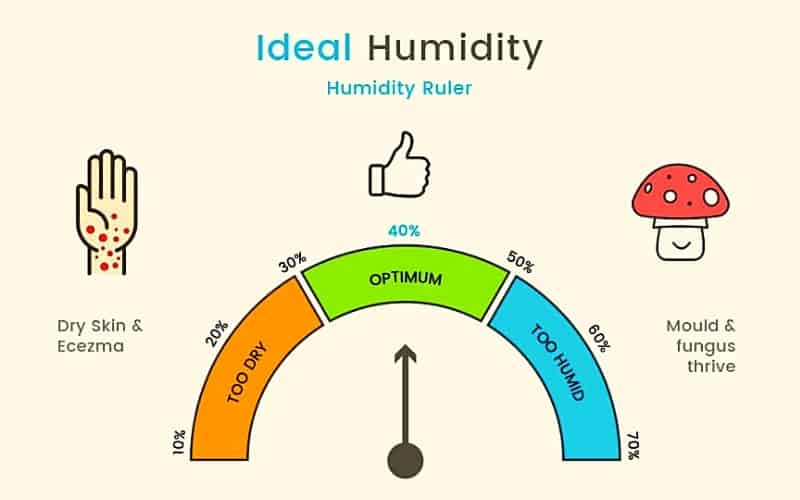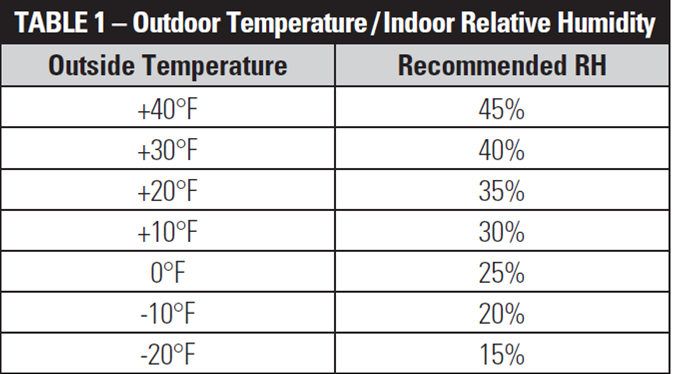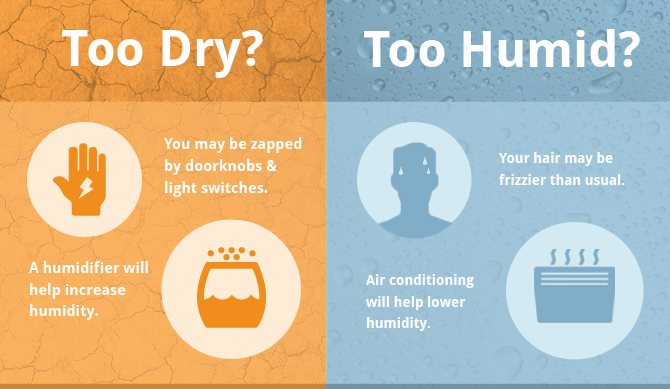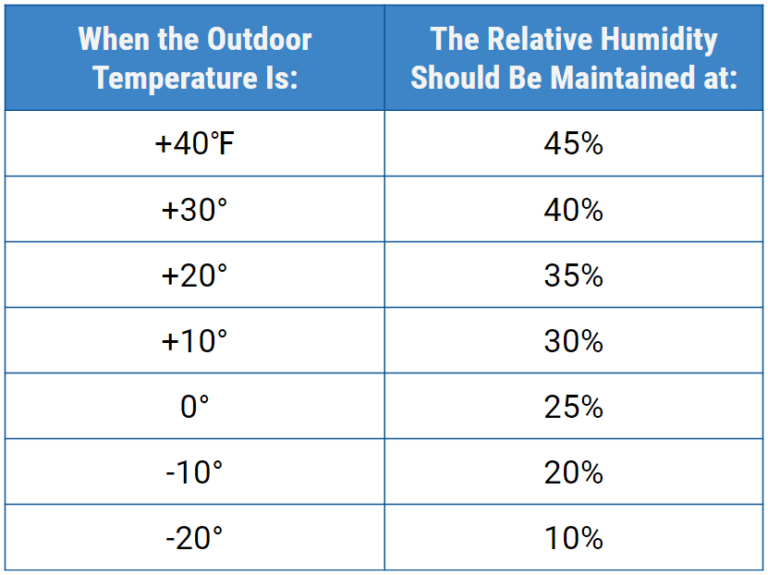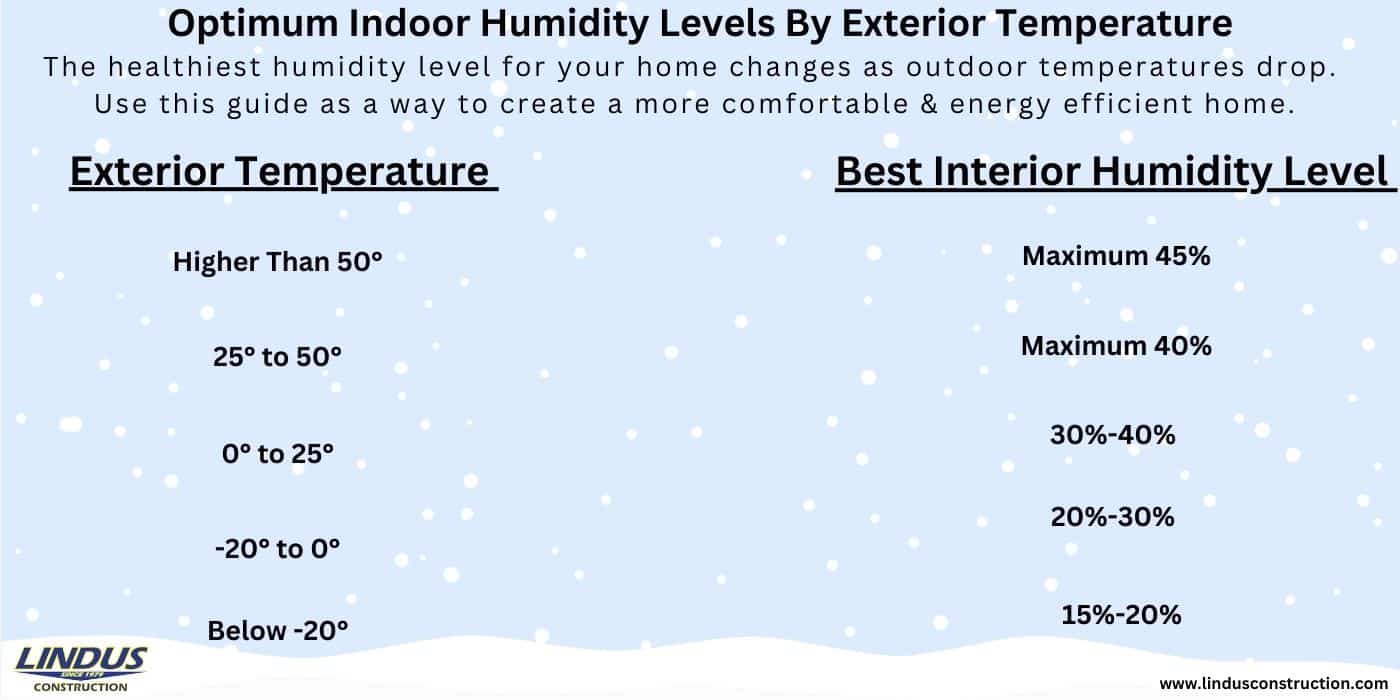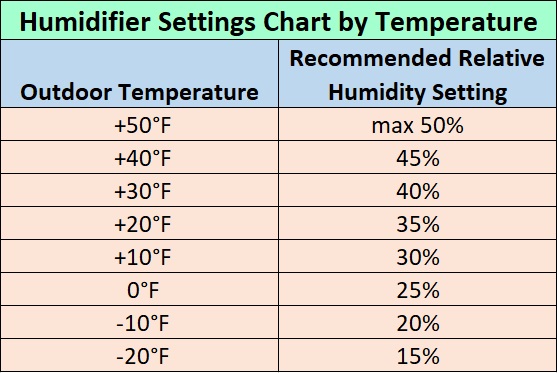What Is The Best Humidity Inside A House

Are you battling with a persistent chill in the winter, despite cranking up the heat? Or perhaps you're feeling clammy and uncomfortable during the summer months, even with the air conditioner running full blast? These common comfort complaints are often rooted in one key factor: humidity. Maintaining the correct humidity level inside your home is crucial for both your comfort and the health of your house itself. Too much or too little moisture in the air can lead to a host of problems.
This article will guide you through troubleshooting humidity issues in your home, helping you understand what the ideal humidity level is, how to diagnose problems, and what simple steps you can take to address them. We'll also highlight when it's time to call in the professionals. Let's get started!
Understanding Ideal Humidity Levels
The sweet spot for indoor humidity generally falls between 30% and 50%. During the winter months, especially in colder climates, aiming for the lower end of this range (around 30-40%) is often recommended to prevent condensation on windows and the potential for mold growth. In the summer, a slightly higher level (40-50%) is usually comfortable.
Why this range? Because humidity directly affects how we perceive temperature. High humidity makes the air feel warmer because it hinders the evaporation of sweat from our skin, our body's natural cooling mechanism. Conversely, low humidity can make the air feel colder because moisture evaporates too quickly, leading to dry skin, chapped lips, and even respiratory irritation.
Maintaining the right humidity also protects your home. Excessive humidity can cause mold and mildew growth, wood rot, and structural damage. Low humidity, on the other hand, can lead to cracking wood floors and furniture, as well as static electricity.
Diagnosing Humidity Problems: A Step-by-Step Approach
Before you can fix a humidity problem, you need to accurately diagnose it. Here's a methodical approach you can take:
Step 1: Observe and Gather Clues (No Tools Required)
Start by simply observing your home and noting any potential symptoms. Look for these tell-tale signs:
- Condensation on windows or walls: This is a clear indicator of high humidity. Pay close attention to windows, especially in bathrooms and kitchens.
- Musty or moldy odors: This is another sign of excessive moisture, often lurking in hidden areas like basements or behind walls.
- Visible mold growth: Look for dark spots or discoloration on walls, ceilings, or around plumbing fixtures.
- Warping or buckling wood: This can be a sign of prolonged exposure to high humidity. Check floors, doors, and window frames.
- Dry skin, chapped lips, or static electricity: These are common symptoms of low humidity.
- Frequent nosebleeds or respiratory irritation: Dry air can irritate nasal passages and exacerbate respiratory conditions.
- Unusually high energy bills: Improper humidity can make your heating and cooling systems work harder.
Make a note of which rooms are most affected by these issues. This can help you pinpoint the source of the problem.
Step 2: Measure the Humidity Level (Basic Equipment Required)
The most accurate way to determine if you have a humidity problem is to measure the relative humidity in your home using a hygrometer. These are relatively inexpensive and readily available at most hardware stores or online retailers. Digital hygrometers are generally more accurate than analog ones.
To get a reliable reading:
- Place the hygrometer in a central location away from direct sunlight, vents, or exterior walls.
- Allow the hygrometer to sit for at least 24 hours to acclimate to the environment.
- Take readings in multiple rooms to get a better understanding of the humidity levels throughout your home.
- Record the readings and compare them to the ideal range of 30-50%.
If your readings consistently fall outside this range, you have a humidity problem that needs to be addressed.
Step 3: Identify Potential Sources (No Tools Required)
Once you've confirmed that you have a humidity problem, the next step is to identify potential sources of moisture. Consider these factors:
- Poor ventilation: Inadequate ventilation in bathrooms, kitchens, and laundry rooms can trap moisture and lead to high humidity.
- Leaky plumbing: Even small leaks can contribute to elevated humidity levels over time. Check under sinks, around toilets, and behind appliances.
- Basement moisture: Basements are often prone to dampness due to groundwater infiltration.
- Excessive indoor plants: While plants are beneficial, too many can increase humidity levels, especially in smaller spaces.
- Improperly vented appliances: Clothes dryers and gas stoves need to be properly vented to the outside to prevent moisture buildup.
- Foundation cracks: Cracks in your foundation can allow moisture to seep into your basement or crawl space.
- Landscaping: Poor drainage around your foundation can contribute to moisture problems.
Carefully inspect these areas and note any potential sources of moisture.
DIY Solutions for Common Humidity Problems
Depending on the severity and source of the problem, you may be able to address it yourself with some simple DIY solutions. Here are a few options:
For High Humidity:
- Improve Ventilation:
- Use exhaust fans in bathrooms and kitchens when showering, cooking, or washing dishes. Ensure the fans are vented to the outside, not just into the attic.
- Open windows (weather permitting) to allow fresh air to circulate.
- Ensure proper ventilation in your attic and crawl space.
- Address Leaks:
- Repair leaky faucets and plumbing fixtures promptly.
- Check for and seal any cracks in your foundation or walls.
- Dehumidifiers:
- Use a dehumidifier in damp areas like basements or laundry rooms. Choose a model that is appropriately sized for the space.
- Regularly empty and clean the dehumidifier to prevent mold growth.
- Adjust Your Lifestyle:
- Avoid overwatering plants.
- Dry clothes outdoors whenever possible.
- Take shorter, cooler showers.
- Check Dryer Venting
- Inspect the dryer vent and make sure it is properly connected and unobstructed. Clean it regularly to remove lint buildup.
For Low Humidity:
- Humidifiers:
- Use a humidifier to add moisture to the air. Choose a model that is appropriately sized for the room.
- Clean the humidifier regularly to prevent mold and bacteria growth.
- Houseplants:
- Increase the number of houseplants in your home. Plants release moisture into the air through transpiration.
- Boiling Water:
- Boil water on the stovetop (safely!) to release steam into the air. Never leave unattended!
- Adjust Your Lifestyle:
- Take shorter, warmer showers.
- Avoid using harsh detergents that can dry out your skin.
When to Call a Professional
While many humidity problems can be addressed with DIY solutions, some issues are best left to the professionals. Consider calling an HVAC technician or other qualified professional if:
- You can't identify the source of the problem.
- The problem is severe or persistent.
- You suspect mold or mildew growth that you can't safely remove yourself.
- You have concerns about the performance of your HVAC system.
- You have any electrical issues related to your HVAC system or appliances.
- You are uncomfortable working with electrical or mechanical equipment.
Specifically, if you suspect issues with your HVAC system (such as a malfunctioning air conditioner that isn't dehumidifying properly, or a furnace that's producing excessive moisture), it's crucial to consult with a qualified HVAC technician. They have the expertise to diagnose and repair complex problems that are beyond the scope of DIY.
Mold remediation is another area where professional help is often necessary. Large mold infestations can pose serious health risks and require specialized equipment and techniques to remove safely. Attempting to remove mold yourself without proper training and protective gear can actually make the problem worse.
Finally, any repairs involving electrical wiring or gas lines should always be performed by a licensed professional. Working with electricity or gas can be extremely dangerous and should never be attempted by someone who is not qualified.
Preventative Measures
Once you've addressed any existing humidity problems, it's important to take steps to prevent them from recurring. Here are a few tips:
- Regularly inspect your home for signs of moisture.
- Maintain proper ventilation in bathrooms, kitchens, and laundry rooms.
- Promptly repair any leaks.
- Ensure proper drainage around your foundation.
- Monitor the humidity level in your home and adjust your humidifier or dehumidifier as needed.
- Schedule regular maintenance for your HVAC system.
By taking these preventative measures, you can help maintain a comfortable and healthy indoor environment for years to come.
Conclusion
Maintaining the proper humidity level in your home is essential for your comfort, your health, and the longevity of your house itself. By following the steps outlined in this article, you can diagnose and address common humidity problems, and take preventative measures to keep your home comfortable and healthy. Remember to always prioritize safety and call in the professionals when necessary. With a little knowledge and effort, you can create a more comfortable and enjoyable living environment for you and your family.
.jpg?width=3508&name=Humidity level chart (1).jpg)
